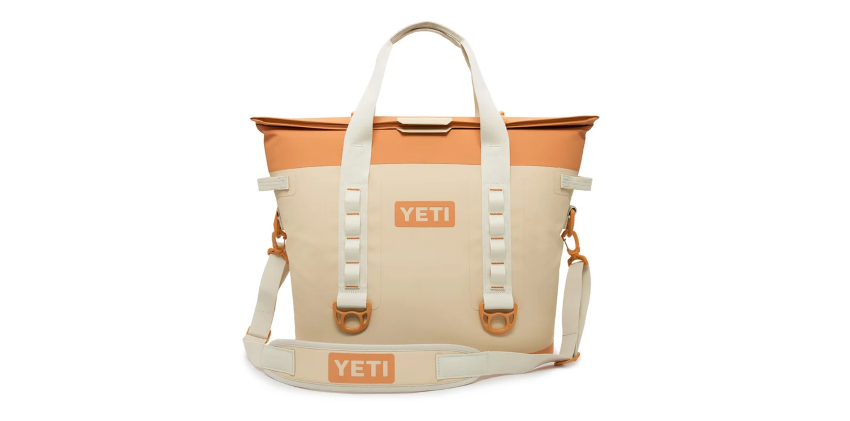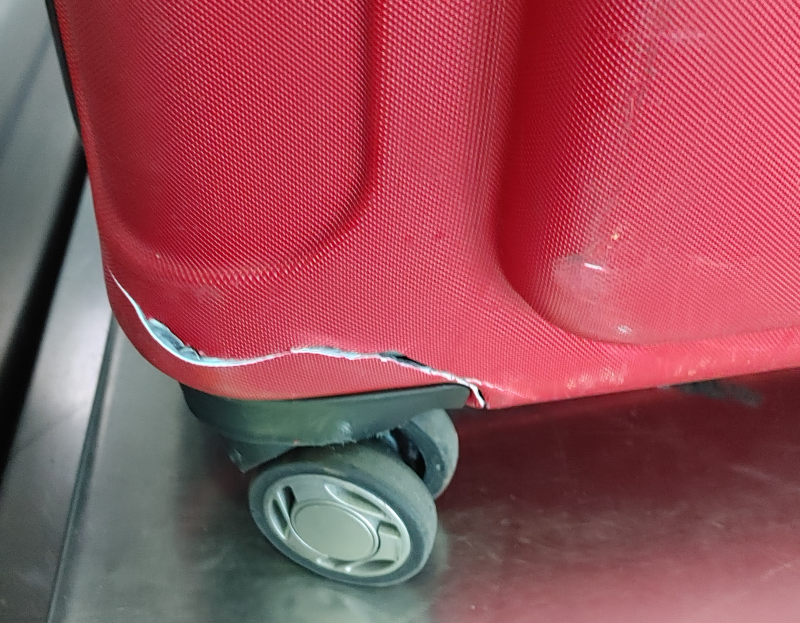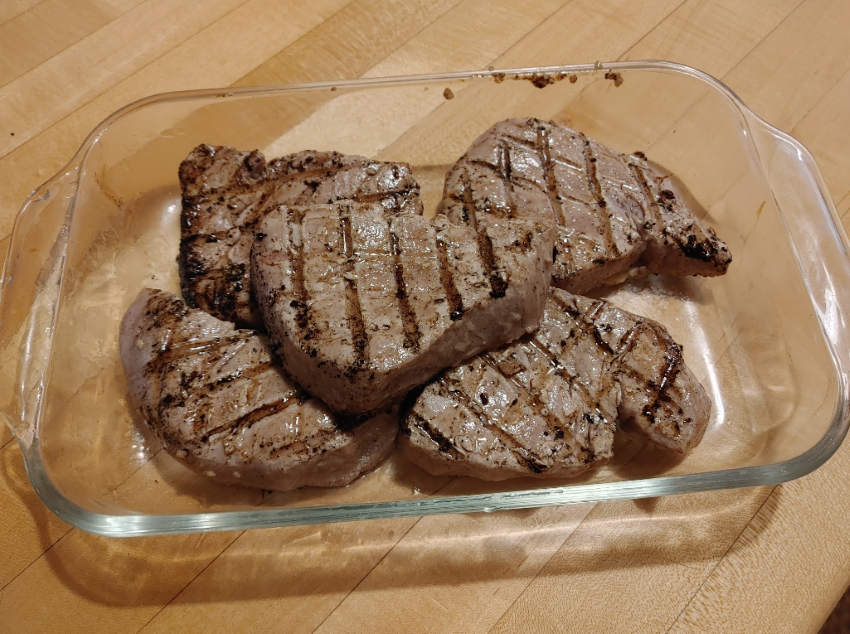Maiden Voyage of our Yeti Hopper M30 Soft Cooler
The primary motivation for our trip to Sport Fish Panama Island Lodge was the opportunity to catch big yellowfin tuna, mostly on poppers, but one huge side benefit to the trip was the chance to eat those same fish. Sushi-grade tuna – seared or served as sashimi – is my favorite fish.
Despite some rumors contrary, IT IS LEGAL TO BRING BACK FISH IN YOUR LUGGAGE, subject to certain restrictions. Captain Shane Jarvis and his staff will vacuum seal fillets for you to take home with you. They even have coolers available for purchase if you forget your own. Hanna and I weren’t going to miss out on the opportunity to stock our freezer with this world-class fish, so prior to the trip we obtained a Yeti Hopper M30 Soft Cooler. We’d looked at several other soft coolers and while it’s not inexpensive ($299.99), it seemed to get the best overall reviews and have the greatest versatility and functionality for our purposes.
The M30 comes in four colors – King Crab Orange, Aquifer Blue, Navy and Charcoal. Hanna loves orange, but the King Crab option is light-colored, and I was worried that if we had to use it as checked luggage it would end up with all sorts of ugly and visible battle scars, so we opted for Navy, which I felt would hide scuffs better. It’s a classy, matte finish with charcoal accents – and it would be equally at home on the tuna boat as it would at a country club picnic (not that we ever go to country club picnics).
First impression when I picked it up? This sucker is heavy. It’s 25”x12”x17.5” and weighs 7 pounds, more than I expected. I guess that makes sense, though, because they need the heft of their “ColdCell Insulation” to keep things cold (or hot, as appropriate). The exterior is also super tough – it’s not going to easily get ripped or torn.
I was a little nervous at first because the top opening is sealed by magnets rather than a zipper. Wouldn’t it come apart easily, either by accident or as the result of some baggage handler trying to bogart my catch? Fear not. The magnets are strong…like “Jaws of Life” strong. It takes a concerted effort to pull the two sides apart, and after some kitchen testing I learned that it’s leakproof, too. If you still have any doubts, there are two straps that extend over the top to hold it shut. One really nice thing about the Hopper is that you can reasonably expect to use it as carry-on luggage, with or without fish. Although both Hanna and I were both entitled to one checked bag with our airfare to Panama on Copa Airlines, we were able to fit everything that needed to be checked in a single suitcase. Rather than checking through the Yeti and unnecessarily risking losing it or getting it scuffed, I just put my Jansport backpack inside of it and carried the whole deal on. When we got to our seats, I removed the items I needed and easily put the Yeti in the overhead compartment.
The true test, of course, came on the trip home. With nearly 20 pounds of tuna in the Hopper there was still room for a few other items, plus the removable shoulder strap. We left Isla Parida at 7:30am local time (8:30am at home). We took a boat ride back to the City of David, a van to the airport, and then a plane ride back to Panama City. We gathered our luggage there, rechecked it, and then had a L-O-N-G layover before our four and a half hour flight to Washington-Dulles. We ended up getting home around 1am, over 16 hours after we left (and probably more since the tuna was actually packed). We brought the Yeti inside, opened it up, and the fillets were still rock hard. That’s a win in my book. Would that have happened with a less fortified and less expensive cooler? Quite possibly not. It’s not a risk I’d be willing to take.
Should you get one of these? I can’t compare it to any other products allegedly in its class simply because I haven’t tried them, but I can say that it did its job as advertised. I would have been beyond seriously bummed if our tuna had been tainted in any way, and it arrived home perfectly. We’ll be going back to Panama again and again (I hope) and that allows me to amortize the cost over multiple trips. You might be able to get away with a less expensive cooler, but I think of it much like rain gear. We all know the guy who buys a $50 rainsuit instead of a quality set, and then trashes it after he gets soaked. Then he buys several more cheap versions before finally investing in the premium gear he should have gotten in the first place. He’s wasted a bunch of money along the way. If you get a lesser cooler and it fails you – either because it breaks or because your catch gets ruined – what have you saved?
I know that previously I’ve asserted that there are situations where you should buy inexpensive (not cheap) luggage. Baggage handlers will treat a $50 suitcase as harshly as they treat a $1,000 model. Indeed, on this trip, our main suitcase got butchered to the point where we had to throw it away (fortunately, even though it was a quality name brand we had purchased it at a substantial discount). On an international fishing trip, though, your cooler is not luggage per se, but rather a tool. Would you skimp on rods and reels before going on the bucket list adventure of a lifetime? I would not. Fresh, high-quality fish line goes on every trip, cost be damned. This should be the same.
In the meantime, the Yeti serves a special purpose that my regular box-shaped coolers do not. I can easily throw it in the back seat of the car with snacks or lunch, leave it there all day, and fully expect it to be temperature-controlled. More time, less ice, perfect result. We’re taking tuna over to my parents’ house tonight, and we need to make some stops along the way – packed in the Hopper, we can leave it sitting for a while and be sure that it’ll still be safe, and we won’t have to lug an unwieldy giant item along with us. That’s a win.









